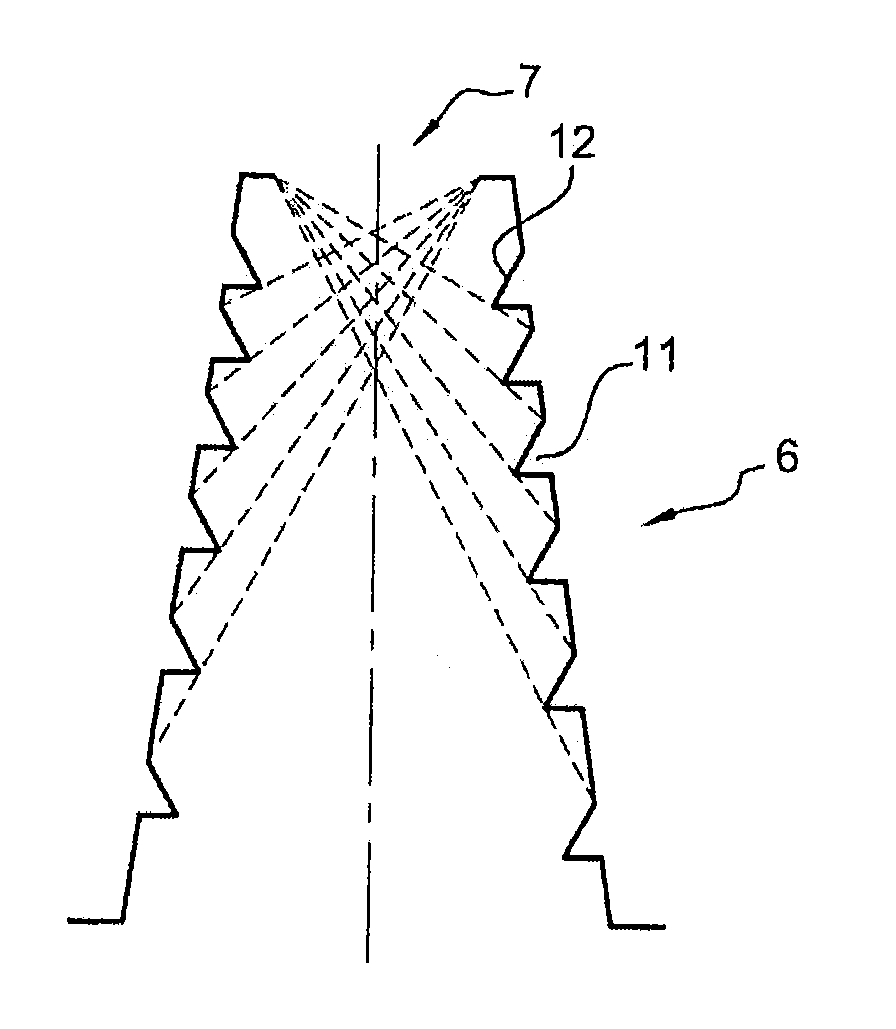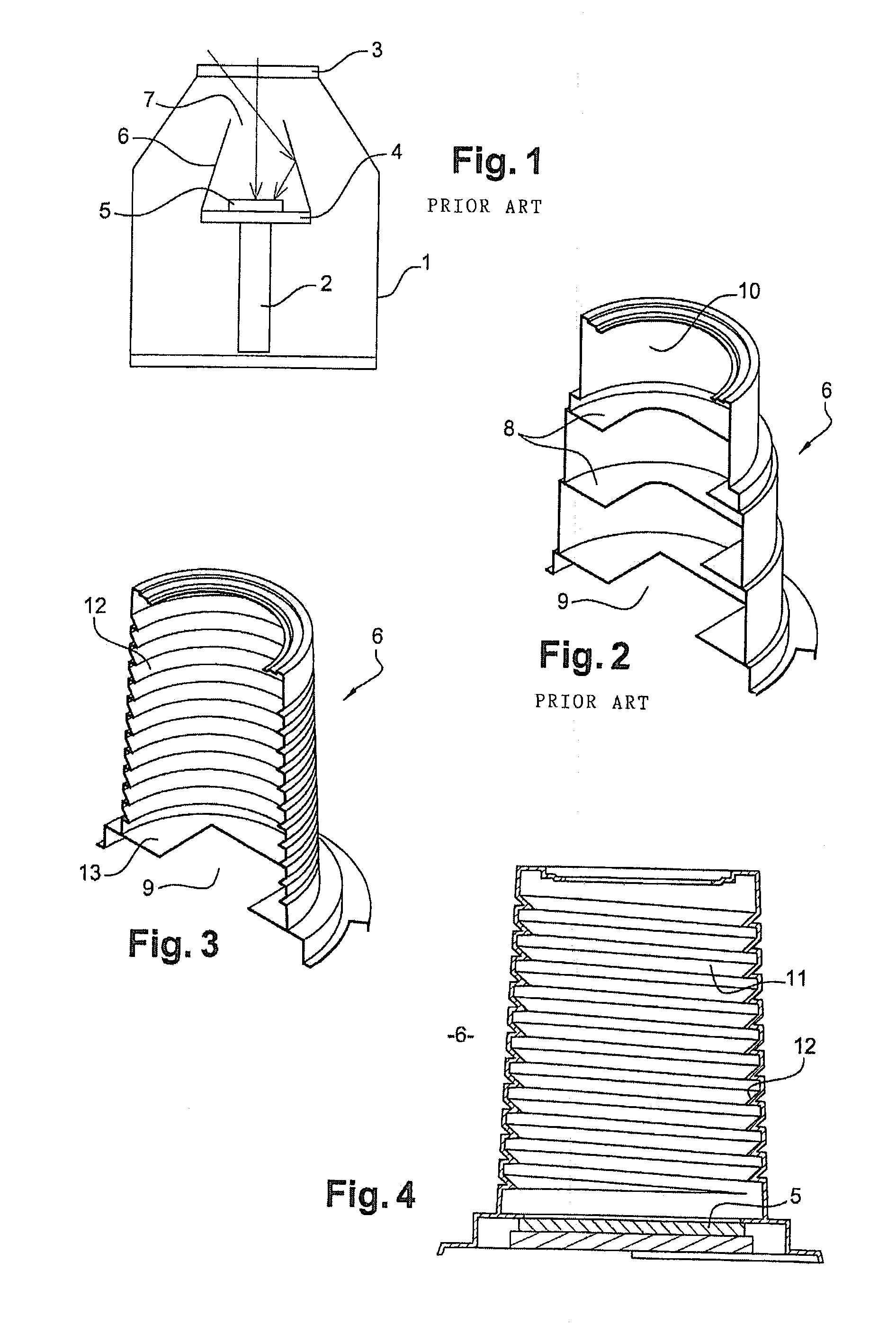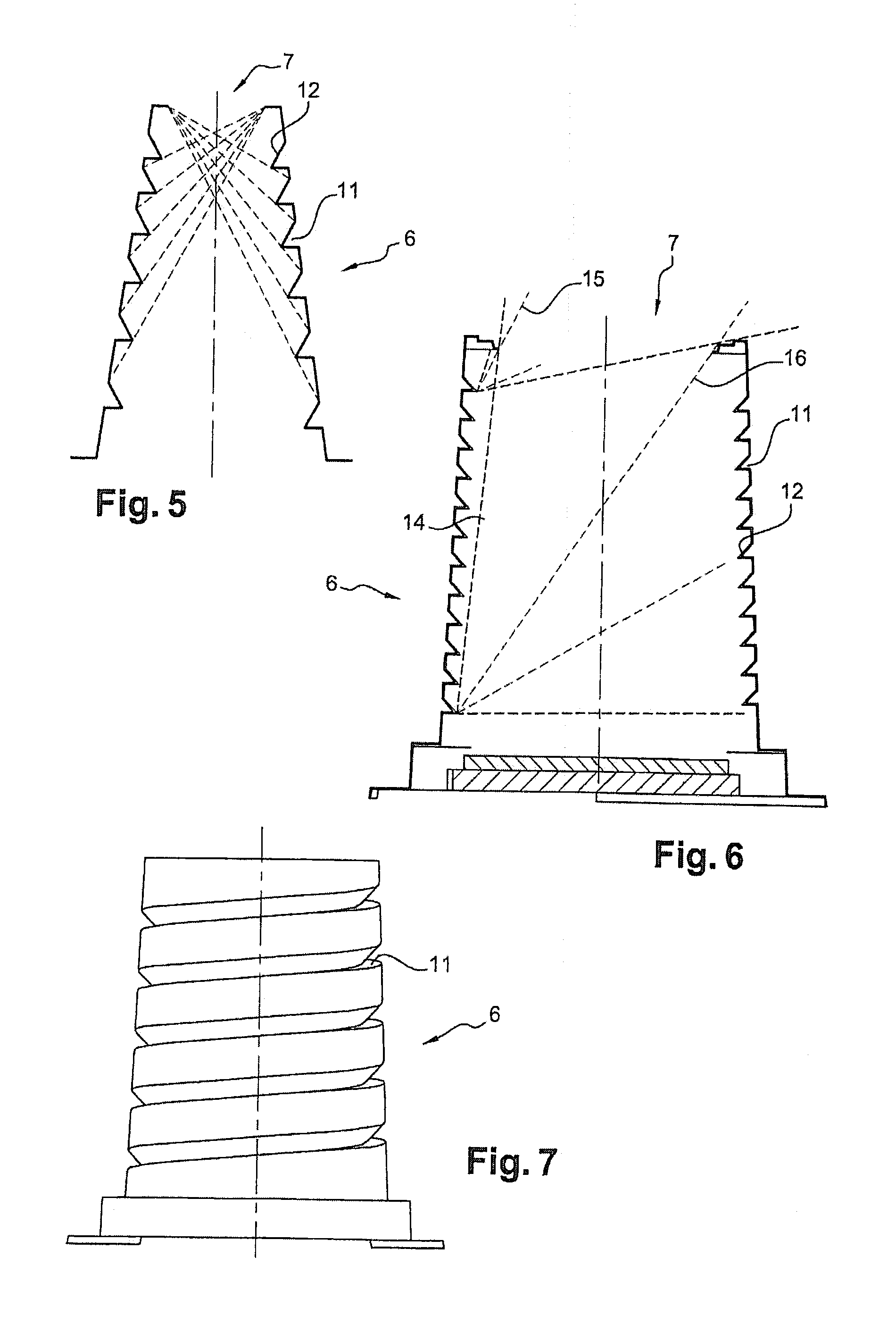Infrared radiation detector
a detector and infrared technology, applied in the field of infrared detectors, can solve the problems of affecting the efficiency of the general vacuum sealed detector, the fitting of the internal face of the cold shield, and the cost of producing such a detector, so as to eliminate stray radiation and reduce the number of the effect of the effect of the number
- Summary
- Abstract
- Description
- Claims
- Application Information
AI Technical Summary
Benefits of technology
Problems solved by technology
Method used
Image
Examples
Embodiment Construction
[0035]FIGS. 3, 4 and 6 illustrate the general principle underlying the invention. Thus, cold shield 6 has a circular, tapered cone shape with the frustrum that constitutes the envelope of said shield being defined relative to an axis of revolution that is shown by the dashed lines in FIGS. 5 to 7.
[0036]Cold shield 6 consists of a metal support made of a nickel or copper-based alloy and having a defining side wall which has a particular profile. This particular profile is the result of a helix whose definition axis coincides with the shield's axis of revolution.
[0037]The pith of the helix can be variable, as shown in FIG. 5, in order to reduce the mass of the shield and, consequently, optimize its mechanical strength.
[0038]This pitch can, however, be constant, as shown in FIGS. 3, 4, 6 and 7.
[0039]Even though this is not shown in the drawings, one can even provide two helixes or several helixes in order to optimize the potential reflection density of the particular profile that is ge...
PUM
| Property | Measurement | Unit |
|---|---|---|
| transparent | aaaaa | aaaaa |
| infrared wavelength range | aaaaa | aaaaa |
| temperature | aaaaa | aaaaa |
Abstract
Description
Claims
Application Information
 Login to View More
Login to View More - R&D
- Intellectual Property
- Life Sciences
- Materials
- Tech Scout
- Unparalleled Data Quality
- Higher Quality Content
- 60% Fewer Hallucinations
Browse by: Latest US Patents, China's latest patents, Technical Efficacy Thesaurus, Application Domain, Technology Topic, Popular Technical Reports.
© 2025 PatSnap. All rights reserved.Legal|Privacy policy|Modern Slavery Act Transparency Statement|Sitemap|About US| Contact US: help@patsnap.com



